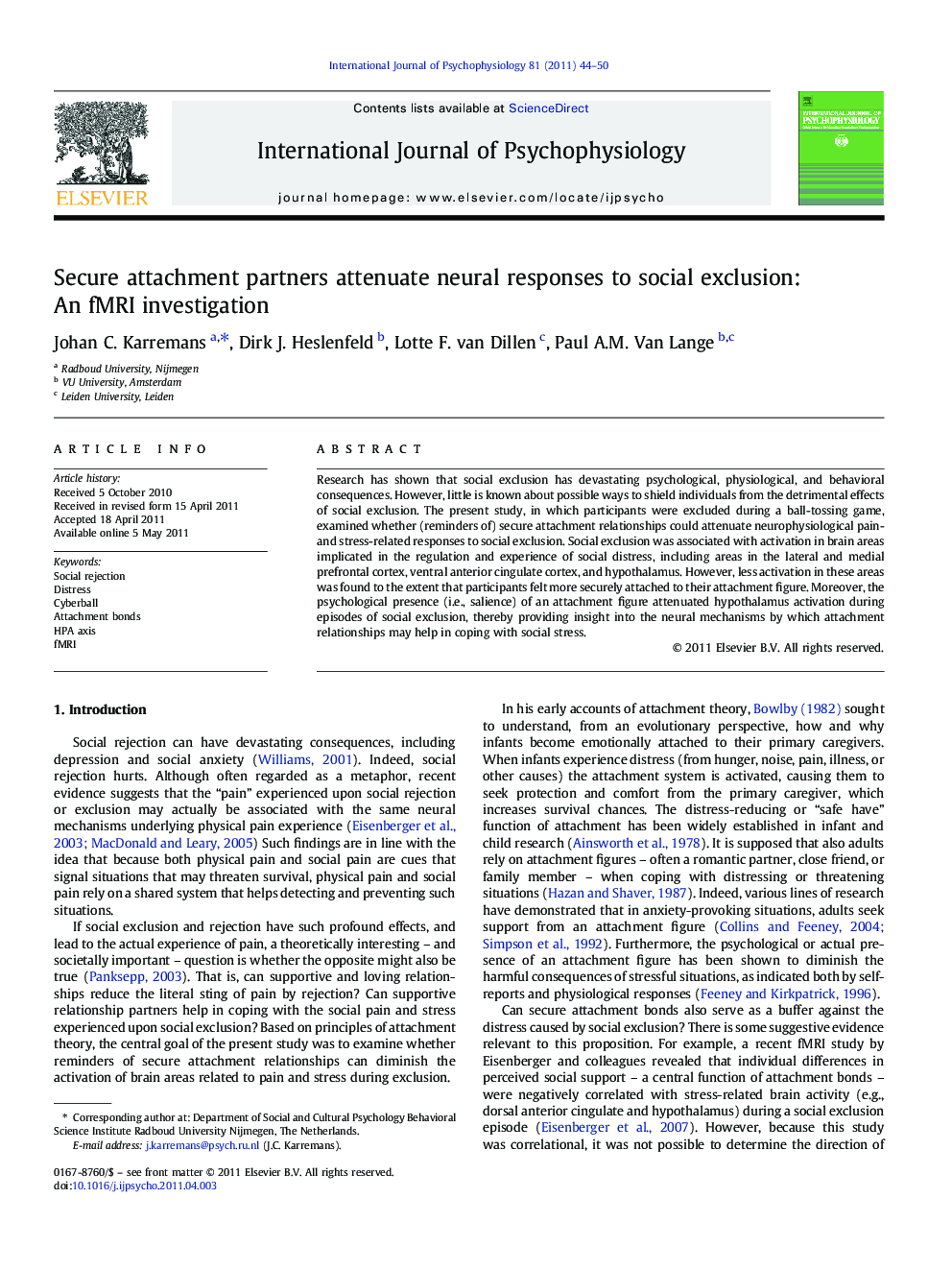| Article ID | Journal | Published Year | Pages | File Type |
|---|---|---|---|---|
| 930142 | International Journal of Psychophysiology | 2011 | 7 Pages |
Research has shown that social exclusion has devastating psychological, physiological, and behavioral consequences. However, little is known about possible ways to shield individuals from the detrimental effects of social exclusion. The present study, in which participants were excluded during a ball-tossing game, examined whether (reminders of) secure attachment relationships could attenuate neurophysiological pain- and stress-related responses to social exclusion. Social exclusion was associated with activation in brain areas implicated in the regulation and experience of social distress, including areas in the lateral and medial prefrontal cortex, ventral anterior cingulate cortex, and hypothalamus. However, less activation in these areas was found to the extent that participants felt more securely attached to their attachment figure. Moreover, the psychological presence (i.e., salience) of an attachment figure attenuated hypothalamus activation during episodes of social exclusion, thereby providing insight into the neural mechanisms by which attachment relationships may help in coping with social stress.
Research highlights► Do attachment relations attenuate neural stress responses to social exclusion? ► Participants were socially excluded from a ball-tossing game. ► Social exclusion activated social distress related brain areas. ► Salience of an attachment figure attenuated hypothalamus activity upon exclusion. ► Higher feelings of attachment were related to lower stress-related brain activity.
